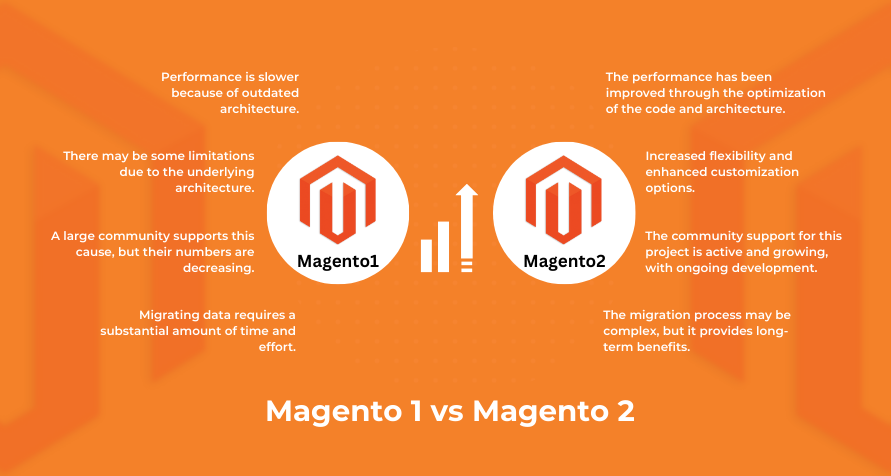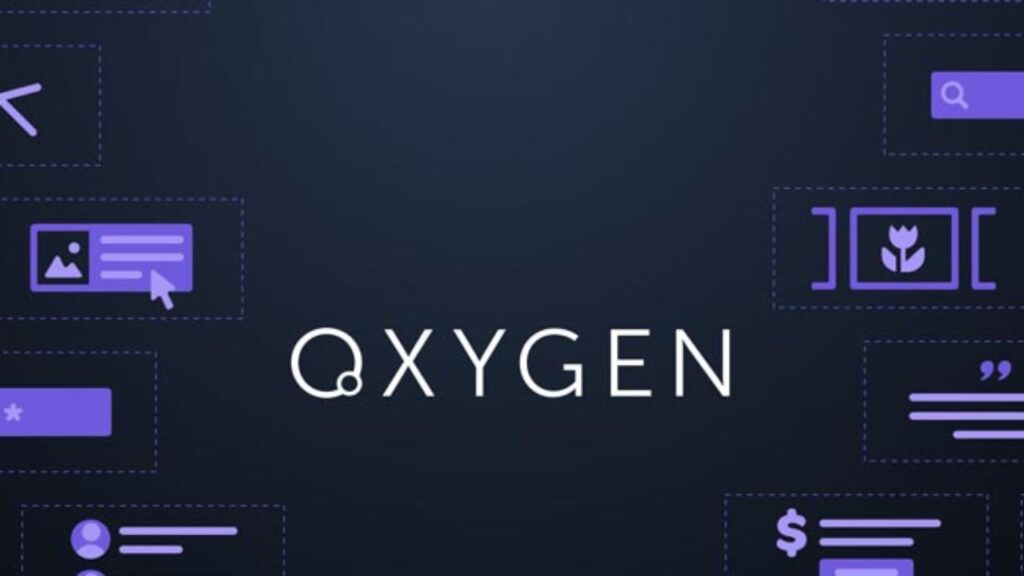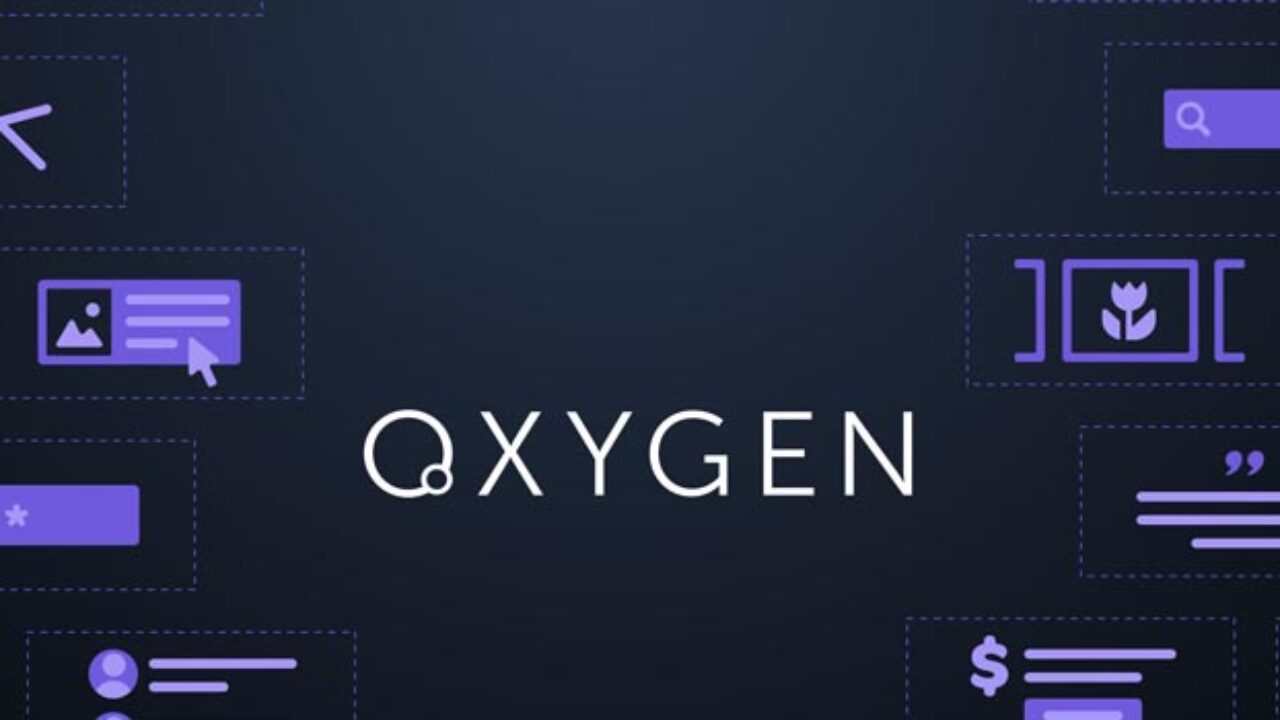What is Magento1?
Magento1, also known as simple Magento, is an open-source e-commerce platform released in 2008. It quickly gained popularity and became the leading solution for building online stores, thanks to its robust features and flexibility, which instill confidence in its capabilities.
Magento 1, the leading solution for building online stores, offers a wide range of features tailored to meet businesses’ unique needs. It also offers extensive customization options, which allow merchants to create unique and tailored online experiences for their customers. Developers can also modify and extend Magento 1 using the source code to add new functionality and integrate it with other systems.
What is Magento2?
Magento 2 was introduced in 2015 and is the successor to Magento 1. It represents a significant upgrade and evolution of the Magento e-commerce platform. It offers a variety of new features, enhancements, and improvements over its predecessor, which will pique your interest with new and exciting possibilities.
Magento 2 was built to address many of the limitations and challenges merchants and developers face using Magento 1. It includes advancements in performance, scalability, security, and user experience, aiming to provide more robust and modern e-commerce solutions and instill confidence in the transition’s security and stability.
Advantages and Disadvantages: Magento 1 vs Magento 2
Advantages of Magento 1
Magento 1 is a comprehensive e-commerce platform with a rich array of features.
Its scalability allows businesses to handle large volumes of products, transactions, and traffic without sacrificing performance.
The platform offers extensive customization options, enabling businesses to create unique and tailored online stores.
Built-in SEO features assist in enhancing the visibility of a website. Online stores in search engine results improve their discoverability.
Businesses can efficiently manage multiple stores from a single admin interface, simplifying operations and expansion.
Magento 1 benefits from a large and active community of developers and users, which provides valuable support and resources.
The platform also allows seamless integration with third-party applications and services, enabling businesses to extend its functionality.
Magento 1 ensures a consistent and engaging shopping experience across all devices with responsive design themes and mobile-friendly features.
Disadvantages of Magento 1
Magento 1 was discontinued in June 2020, leading to discontinued official support and security patches.
It is resource-intensive and complex, requiring powerful hosting, server infrastructure, and developer assistance for customization and maintenance.
While it has a vast repository of extensions, many are expensive, adding to the overall expenses.
Migrating from Magento 1 to newer versions or alternative platforms involves significant time, effort, cost, and potential disruptions to business operations.
Advantages of Magento 2
Magento 2 is an improved version of Magento 1, offering improved performance and speed.
This leads to quicker loading times and an improved user experience.
It includes advanced search features, such as Elasticsearch integration, which helps customers find products quickly and efficiently.
The admin interface for Magento 2 offers an improved, user-friendly interface that simplifies store management and merchants’ daily tasks.
Magento 2 has various built-in features, including advanced marketing tools, analytics, and reporting capabilities, empowering merchants to grow their businesses effectively.
Magento 2 is a scalable platform similar to its predecessor, Magento 1, that caters to businesses of all sizes, from small startups to large enterprises.
Finally, Magento 2 benefits from a vast and dynamic community of developers and users actively providing resources, extensions, and support to help merchants succeed.
Disadvantages of Magento 2
Some extensions and customizations from Magento 1 may not be compatible with Magento 2, leading to potential issues.
Merchants new to the platform or transitioning from other e-commerce solutions may need to overcome a learning curve.
For small businesses, the implementation and maintenance costs can be significant.
Magento 2 may require more hosting and server infrastructure resources than other platforms.
Highly specialized or complex requirements may have limitations in terms of customization options.
Regularly updating and maintaining something is essential to ensure its proper functioning and longevity—security and website performance, which can add to the merchant’s workload and costs.
Comparison between Magento 1 and Magento 2
| Aspect | Magento 1 | Magento 2 |
| Performance | Performance is slower because of outdated architecture. | The performance has been improved through the optimization of the code and architecture. |
| User Experience | The user interface must be updated and more intuitive, making it easier to use. | Enjoy a modern and streamlined user experience with a cleaner interface. |
| Mobile Responsiveness | Additional customization and optimization are required. | Our product was designed with mobile-first principles, is fully responsive, and is right out of the box. |
| Extension Compatibility | Several extensions are available, but compatibility issues may arise with newer versions. | There is a growing ecosystem of extensions that have better compatibility. |
| Customization and Flexibility | Many options are available to customize, but there may be some limitations due to the underlying architecture. | Improved architecture leads to increased flexibility and enhanced customization options. |
| Security | The system no longer receives security updates, making it vulnerable to various threats. | This statement is clear and error-free. Therefore, it does not require any correction. |
| Community and Support | A large community supports this cause, but their numbers are decreasing. | The community support for this project is active and growing, with ongoing development. |
| Migration Complexity | Migrating data requires a substantial amount of time and effort. | The migration process may be complex, but it provides long-term benefits. |
| Cost | Initial costs can be reduced by using older versions and available extensions. | Although it may involve a more considerable initial investment, it provides better long-term value. |









